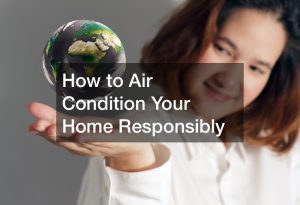The quality of indoor air significantly influences health and comfort. Understanding how to perform air duct cleaning properly can help maintain a cleaner, safer home environment. However, many people have questions about the process and its necessity.
How Often Should Air Ducts Be Cleaned?
Determining Cleaning Frequency
Factors such as pet ownership, allergies, and recent renovations impact how often air ducts should be cleaned. Homes with pets or smokers may require more frequent cleaning due to accumulated hair and odors. Meanwhile, those who suffer from allergies might benefit from a more rigorous cleaning schedule.
Regular inspections can help assess the state of the ductwork, guiding you on when to clean. The presence of pets often results in increased hair and dander in the home, which can accrue in air ducts. Post-renovation, it’s vital to clean ducts to remove construction debris that could compromise air quality.
Depending on individual circumstances, it might be necessary to clean ducts more often than the typical 3 to 5-year interval. Seasonal changes or local environmental factors can also play a role in determining frequency. Consulting with a professional can provide personalized advice tailored to your specific needs.
Signs That Indicate It’s Time for Cleaning
Examine common signs like visible dust buildup, increased allergies, and musty odors to decide when to clean your air ducts. If family members begin to experience more frequent respiratory issues, it might indicate dirty ducts. Similarly, mustiness in the home can signal trapped moisture or mold in the system.
Signs like an inconsistent airflow throughout different rooms can also suggest blockages or dirt accumulation. Excessive dust on furniture and surfaces might be another indicator. These cues can help decide whether a thorough cleaning is necessary.
Addressing air duct issues proactively can enhance system efficiency and air quality. Inspections and maintenance routines help identify potential problems before they worsen. Improving air quality can not only reduce allergy symptoms but also promote overall health and wellness at home.
Benefits of Regular Cleaning
Review how consistent cleaning can enhance air quality, prolong HVAC system life, and reduce energy costs. By clearing debris from ducts, air can flow more freely, reducing strain on the HVAC system. This increased efficiency can lead to lower energy bills, offering savings over time.
Regular air duct cleaning also reduces the risk of allergens and pollutants circulating through your home. Cleaner air supports respiratory health and can lessen the symptoms of allergies and asthma. Moreover, clean ducts contribute to a fresher-smelling indoor environment, free of lingering odors.
From an HVAC system longevity perspective, routine cleaning diminishes the wear and tear caused by dirt and debris. Without regular maintenance, systems can overheat and fail prematurely. Thus, routine air duct cleaning is a crucial investment in the long-term health of your home’s air system.
What Are the Steps Involved in Air Duct Cleaning?
Inspection and Assessment
Learn about the initial inspection of the HVAC system to assess the cleanliness and plan for effective cleaning. A trained professional typically examines the entire system and identifies areas of concern. This step ensures a customized cleaning plan addressing specifically identified problem areas.
The inspector checks for visible dirt, mold growth, and blockages within the ducts. Such inspections are essential to establish a baseline for subsequent cleaning efforts. Assessments can also reveal any structural issues that might require attention.
Taking these preliminary steps can prevent overlooked issues that could persist post-cleaning. Proactive evaluations make subsequent cleaning more efficient. They form the foundation of a comprehensive air duct cleaning strategy.
Cleaning Process
Exploring various methods such as vacuuming, brushing, and using specialized tools to remove debris from ducts. Duct cleaners often use powerful vacuums to suck out dust and contaminants effectively. Brushes and air whips might also be employed to dislodge dirt clinging to duct surfaces.
Advanced tools like rotary brushes and air compressors can ensure a deeper clean. Specialized equipment may be necessary for more complex duct systems. This thorough approach ensures all parts of the system receive proper attention and cleaning.
During this process, cleaning usually extends to other HVAC components such as coils and filters. This holistic cleaning enhances the efficiency and lifespan of the HVAC system. A clean system works better, saving energy and reducing operational costs.
Post-Cleaning Verification
Understand the importance of inspecting the system after cleaning to ensure all components are properly cleaned. A final inspection verifies that all dust, mold, and debris have been effectively removed from the system. This step is critical to ensuring cleaning has met expected standards.
Professionals might use cameras or other inspection tools to verify cleanliness. These results confirm that all areas received thorough attention during cleaning. Post-cleaning verification can instill confidence in the effectiveness of the service provided.
Regular post-cleaning checks form part of ongoing maintenance routines. After cleaning, maintaining a schedule for inspections maintaining a schedule for inspections can prevent new problems from developing. This vigilance ensures homes continue to benefit from cleaner air long-term.
Effective air duct cleaning involves understanding when cleaning is necessary and how to perform it correctly. By following structured steps and considering factors unique to your living situation, you can maintain a healthier indoor environment with improved air quality. Investing in regular duct cleaning is not just about cleaner air but also about extending HVAC lifespan and operational efficiency.
.




